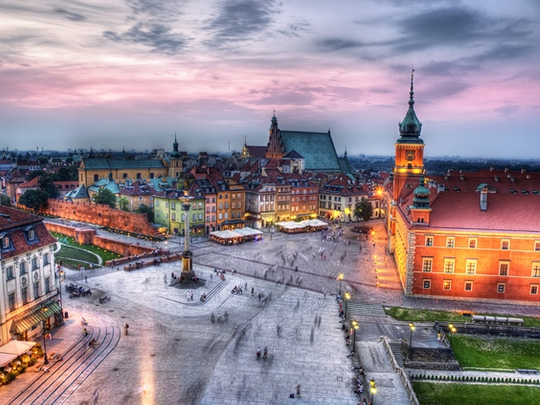
Warsaw maybe best known architecturally for its triumphalist Stalin-era Palace of Culture, the drabness of its communist housing and the baroque charm of its old town, rebuilt brick by laborious brick after its total destruction in the Second World War. But for political wonks who followed Poland’s October 25 election a stroll through the city also offers an intriguing glimpse into the Polish psyche and helps explain why the vote may bring an end to nearly a decade of political and economic stability and push the country away from the European mainstream.
The pro-business, centrist Civic Platform (PO), in power since 2007, handed over control to the socially conservative Law and Justice (PiS) party, which favours left-leaning economics, a Eurosceptic foreign policy and nationalist rhetoric
A tour of Warsaw on the tenth day of any month is especially instructive for students of Polish politics. On this day hundreds of Poles gather near the neoclassical presidential palace on the edge of the Old Town to commemorate the death of president Lech Kaczyński and nearly 100 others in a plane crash in Russia on April 10, 2010.
Reminder of things gone wrong
The crash was a tragedy that shook Poland to the core — the dead included top army brass, the central bank governor and many senior lawmakers from across the political spectrum. But to many of the mourners, who carry candles and pray, it was more than that. In their view, the crash was deliberately engineered by Russia to destabilise its old foe Poland. Or at the very least, some mourners say, the crash showed criminal negligence by the PO government in failing to ensure proper protection for Kaczyński, its political adversary. Kaczyński was the twin brother of PiS leader Jaroslaw and with him the cofounder of the party which will form Poland’s next government. Jarosław Kaczyński often attends the marches.
The marches provide an opportunity to voice the emotions that drive many PiS voters: distrust of foreigners, Poland’s own brand of patriotism infused with Catholic piety and anger that the country’s economic success is not more evenly shared. All these are reflected in PiS’s policy plans: a no to the euro in the foreseeable future, more Catholic values enshrined in Polish law and more welfare spending for the poor.
A visit next to the newly opened restaurant N31 in Warsaw’s commercial district helps explain the widespread sense of disenchantment with the centrists. Polish celebrity chef Robert Sowa, a former cook for the national soccer team, opened the eatery after an illegal audio recordings scandal involving the PO government and the central bank forced him to shut down his previous restaurant. The recordings made at that restaurant included central bank governor Marek Belka using expletives about colleagues and discussing deals with the government. Belka said his words were misinterpreted but never denied the conversation.
The scandal, which deepened Poles’ sense of a remote, clannish and self-interested political and business elite, took a heavy toll on support for PO, which got 24.1 per cent of the vote, down from the 41 per cent it won in 2007 when it ousted Kaczyński’s PiS-led government.
Baby octopus
Another restaurant, the top-notch Amber Room in Warsaw’s government district, also carries echoes of the scandal. Local media have reported that then foreign minister Radosław Sikorski spent €300 (about Dh1,208) — roughly the after-tax minimum wage in Poland — on a meal with another official. After a media outcry, Sikorski, who had charged the meal on his government credit card, repaid the bill from his pocket.
The Amber Room is located in a small eclectic palace designed by one of Warsaw’s pre-eminent architects, Leandro Jan Marconi, and serves fusion cuisine that mixes dishes such as beef tartare with the very Polish sauerkraut. Some of the audio recordings revealed politicians to be dining on octopus dishes. Baby octopus has since entered the Polish lexicon as a synonym for excess.
Reviewing the past
If after all the politics you are still hungry for some architectural sights, then head for Warsaw’s towering Palace of Culture and Science, a sprawling neo-Gothic building — Poland’s tallest — at the heart of the city that inspires both love and loathing among residents. Constructed in the mid-1950s as a gift from Soviet dictator Joseph Stalin to remind Poles of where their loyalties should lie during the Cold War, it is seen by many as a cultural oddity that adds spice to modern Warsaw.
Others see it as a reminder of Poland’s communist-era subjection to Moscow and want it demolished. “It should be Poland’s Berlin Wall,” Sikorski once said.
“It’s not ecological. It wastes energy... There should be a park there instead, where Warsaw residents could have picnics.”






